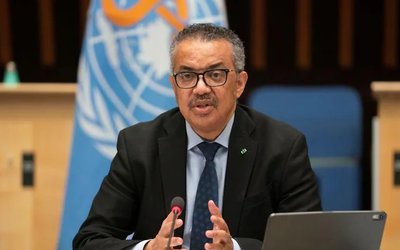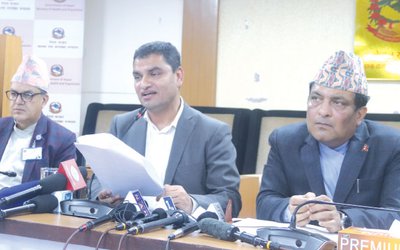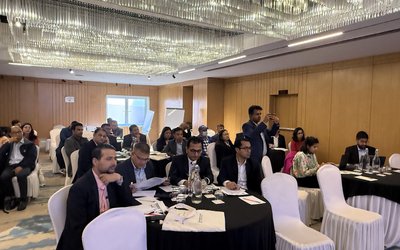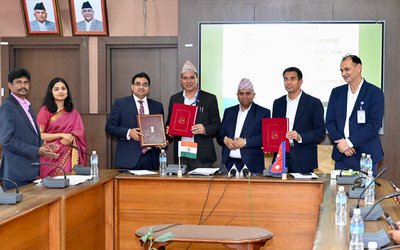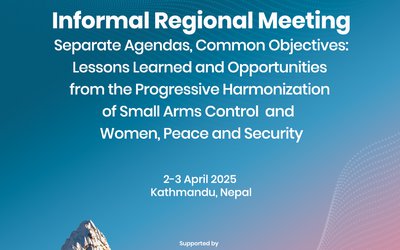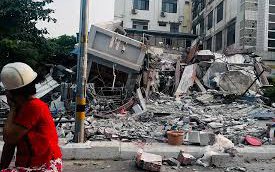Nepalis know that if not for the remittance that our migrant workers ( from India, the Middle East,Malaysia, and Korea) bring in, our economy would come to a standstill. About 1, 500 migrants leave Tribhuvan International Airport every day to go to the Middle East, Malaysia or Korea. Some estimate that over a billion rupees enters daily into Nepal, thanks to these workerswho predominantly are involved in unskilled, menial tasks such as cleaning or lifting construction material in a hot, humid environment.
Unfortunately there is a dark side to this lucrative income. About 3 to 4 coffins of migrant workers arrive every day at our international airport. But the stark reality is that in most instances we have no idea what the cause of death was and why this population is sovulnerable to dying .
And yet these migrant workers are not supposed to be a vulnerable population. For one thing, the workers are mostly young people in their prime. They usually do not have any co morbidities such as diabetes, hypertension, and coronary artery disease give their youth. Furthermore many of these destinations require a proper physical check-up prior to departure. Even if the check- ups were spurious, these death rates ( 3 to 4 coffins per day) are unacceptably high.
The tragic part is that as a nation which owes so much to these people, we have notinvestigated the cause of death in these people with a view to taking prevention measures. Hence many questions arise to which we have scant answers.
For example, are the death rates also as high in migrant workers from other countries such as Bangladesh, India, the Philippines? Why are autopsies to find the cause of death not performed on these dead Nepalis in the host countries? Does not the memorandum of understanding ( MOU) between Nepal and these host have a clause about doing autopsies? If not are serious efforts being made to amend this MOU?
Without documented causes of death, we are only left with conjectures as to why young Nepali workers die at this rate. Here are some possible reasons about the causes of death.
Dehydration may be an important problem. For many workers who come from the mid- hill regions of Nepal, the extreme desert heat in the Gulf may be overwhelming. Indeed they may not be given time to acclimate and put straight to work. Furthermore, the importance of hydration ( drinking adequate fluids ) may not have been emphasized thus setting the stage for dehydration. In addition many may drink alcohol to excess which will make them even more dehydrated and possibly lead to a life- threatening situation.
Motor vehicle accidents may be another reason. For example, many workers may think that traffic will partly stop (as it usually does in Nepal)to help accommodate people cross the road. Not having any forewarning of the fact that traffic in other countries will just zoom byand not come to a stop to accommodate pedestrians, people may be dying just attempting to cross the road.
Clearly mental stress and trauma has to figure very commonly in many migrant workers in trying to adjust and work in a totally alien culture with asevere language barrier to boot. It is not surprising that there may be deaths due to suicides or even homicides because of intense frustration and anger. Finally there may be victims of infectious diseases like tuberculosis, hepatitis E or typhoid fever which may have already been incubating here.
The concerned authorities need to form a panel of health professionals and other relevant individuals to ascertain the cause of death in these young Nepalis and to promptly start discussion with the host countries about these deaths so that preventive measures can be taken to avoid them. This is the least that can be done for the Nepali migrant workers.

Buddha Basnyat MD
Buddha Basnyat, MD, MSc, FACP, FRCP, Director of the Oxford University Clinical Research Unit-Patan Academy of Health Sciences, Kathmandu.
- Altitude Sickness
- Feb 20, 2018
- Post-earthquake Nepal: The Way Forward
- Dec 13, 2015
- The Annapurna Sanctuary
- Nov 29, 2015
- Diarrhea at the Summit
- Nov 08, 2015
- Altitude Sickness ( AMS, HAPE, HACE)
- Oct 15, 2015


